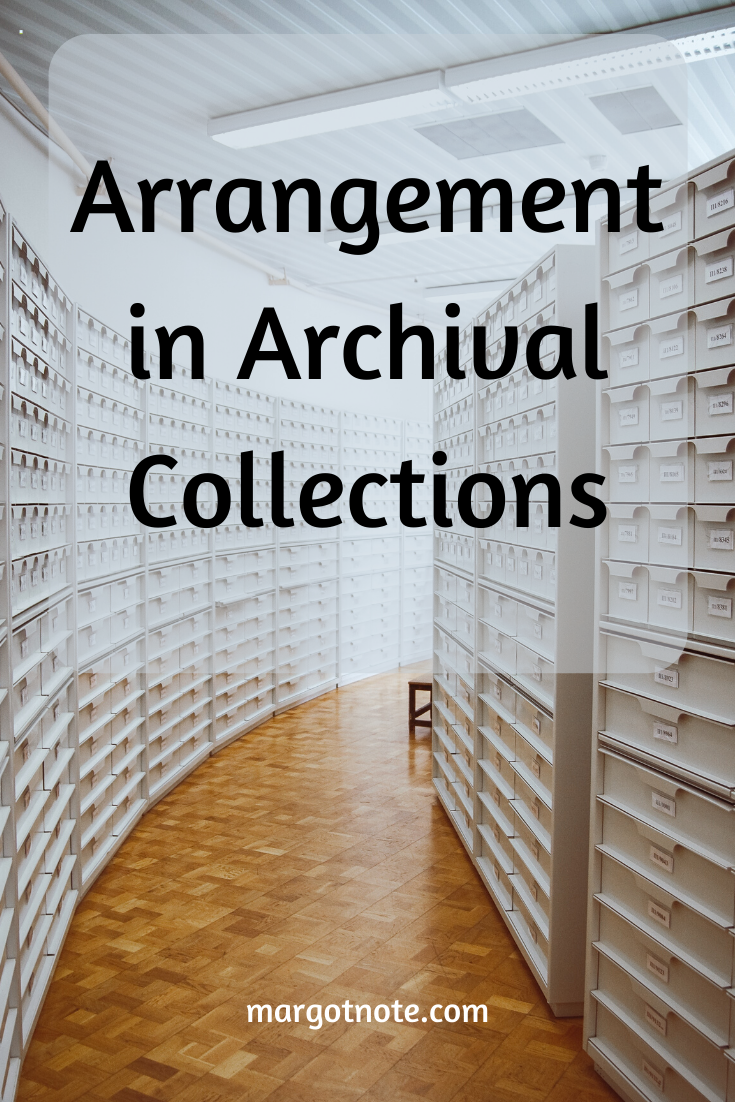Arrangement and description are the critical means by which archivists administer and control their holdings. Archivists view arrangement and description as an ongoing process, a series of linked activities that start with the decision to acquire materials.
Capturing Information
During accessioning, archivists establish an initial set of internal information systems, which sets the basis for this ongoing process. As work continues on a collection, the archivist expands and updates the information. Archivists may move the collection, get additional materials from the donor, or do further arrangement and description work—resulting in more detailed content descriptions.
The underlying rationale for these systems is that they continue to reflect the link between the records and the context of their creation. They also document what the archives has done to the records. That transparency is increasingly important for researchers. In the past, these systems consisted of multiple analog files, such as a card file with donor information or a logbook where accession numbers were assigned. Now, the information is frequently in one electronic system, but the underlying logic remains.
Archives and manuscripts form part of the overall information resources of a repository, along with books, serials, audiovisual materials, and databases. The underlying unity of all these information resources should structure the program, since queries are not format-based, except for visual materials.
The purpose of arrangement and description is to promote access. Arrangement addresses the physical organization of records, while description is the process used to provide information about the context and content of records. Arrangement is inherently an intellectual process, and thinking about it only in terms of physical arrangement is too narrow. Both processes contribute to access.
Arrangement Defined
Arrangement is the process of putting items into meaningful groups and putting those groups in relation to each other. It identifies and brings together sets of records derived from a common source, which share characteristics and the same file structure. It also identifies relationships among such sets of records and between records and their creators, which relates content to context.
This process involves both intellectual and physical activities. Intellectual activities include analysis of records in terms of the type of materials, provenance, functional origins, and contents. Physical activities include the actual arrangement, sequence of papers, conservation measures, packing, and labeling.
Arrangement is also the process of organizing materials according to their provenance and original order, to protect their context and to achieve physical or intellectual control over the materials. It’s the organization and sequence of items within a collection.
Provenance and Original Order
In discussing arrangement, one must also discuss provenance and original order. Provenance suggests that records should be maintained according to their origin and not intermingled with those from another provenance.
Maintaining provenance maintains the relationship between the records and the organizations or individuals who created, accumulated, and maintained them in the conduct of personal or corporate activity. These actions aid reference as the archivist can identify where in an organization a specific activity took place and thus where the records might be.
Original order notes that records should be maintained in the order established by the person or organization who created, accumulated, assembled, or maintained them. Keeping records in the order in which the creator kept them provides information about the context and use of those records.
Intellectual and Physical Control
Through arrangement and later, description, archivists provide a structure—a framework of knowledge—that supports a wide range of research in collections of enduring value. Processing collections by provenance and original order and conducting arrangement using archival principles allows users to come as close as they can to historical figures and events.
The blog was originally published on Lucidea's blog.
Looking for archival advising, records management, and historical research services? Click below to speak with an expert consultant.































